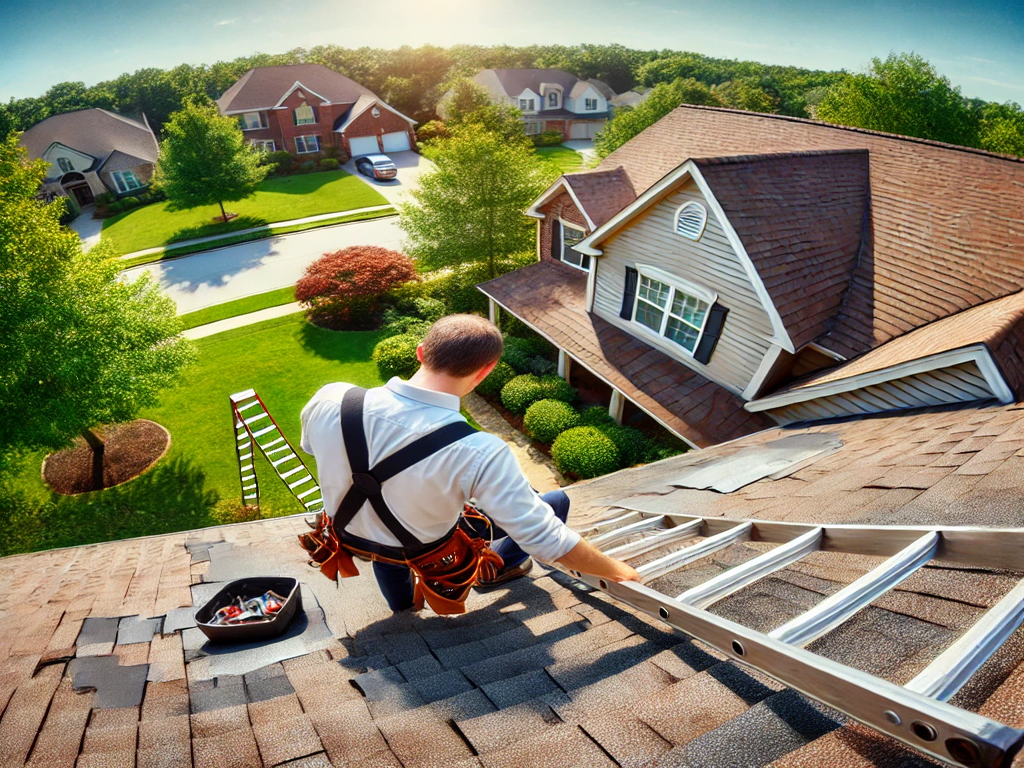Learn how to determine if your roof needs roof repair or replacement. This comprehensive guide covers signs, inspections, costs, and tips for making the right decision for your home.
Your roof is one of the most critical components of your home, protecting you from the elements and ensuring your comfort. However, over time, even the best roofs can suffer damage and wear. Determining whether you need a roof repair or a complete replacement can be challenging, but making the right decision is crucial for the longevity and safety of your home. This guide will walk you through the signs of roof damage, the process of roof inspections, cost considerations, and the benefits of both repair and replacement.
Understanding Roof Damage
Common Types of Roof Damage
Roofs can suffer from various types of damage, including:
- Shingle Damage: Cracked, curling, or missing shingles can expose your roof to leaks.
- Flashing Failures: Damaged flashing can lead to water infiltration around chimneys and vents.
- Gutter Issues: Clogged or damaged gutters can cause water to back up and damage the roof edge.
- Ventilation Problems: Poor attic ventilation can lead to moisture buildup and damage the roof structure.
Impact of Weather on Roofs
Weather plays a significant role in roof deterioration. Heavy rains, snow, hail, and high winds can all cause damage over time. UV rays from the sun can also weaken roofing materials, making them more susceptible to cracking and breaking.
Lifespan of Different Roofing Materials
The lifespan of your roof largely depends on the materials used:
- Asphalt Shingles: 15-30 years
- Wood Shingles/Shakes: 20-40 years
- Metal Roofing: 40-70 years
- Tile Roofing: 50-100 years
- Slate Roofing: 75-200 years
Signs You Need a Roof Repair
Leaks and Water Damage
Water stains on your ceiling or walls are clear indicators of a roof leak. These should be addressed immediately to prevent further structural damage.
Missing or Damaged Shingles
If you notice shingles that are cracked, curling, or missing, it’s time to consider a repair. These shingles can allow water to penetrate the roof deck, leading to more extensive damage.
Sagging Roof Deck
A sagging roof deck is a serious issue that usually indicates structural problems. This can be caused by prolonged water damage or the weight of heavy snow.
Mold and Mildew Growth
Mold and mildew are signs of excessive moisture, which could be due to a leaky roof. Addressing this issue promptly can prevent health problems and further damage to your home.
Signs You Need a Roof Replacement
Extensive Shingle Damage
When a significant portion of your shingles is damaged, repairing individual shingles may not be sufficient. A replacement might be more cost-effective in the long run.
Roof Age and Wear
Most roofing materials have a lifespan. If your roof is approaching or has surpassed its expected life, it’s wise to consider a replacement to avoid recurring issues.
Structural Issues
Signs of structural damage, such as a sagging roof or extensive water damage, often warrant a full replacement to ensure the safety of your home.
Increasing Energy Bills
If your energy bills are rising without a change in usage, it could be due to poor roof insulation. A new roof can improve energy efficiency and reduce your heating and cooling costs.
Conducting a Roof Inspection
DIY Roof Inspection Tips
You can perform a basic inspection yourself by:
- Checking for visible damage from the ground using binoculars.
- Inspecting your attic for signs of water damage or light penetration.
- Looking for debris in gutters that might indicate shingle deterioration.
Professional Roof Inspections
Hiring a professional can provide a more thorough assessment. They can identify hidden problems and provide an accurate evaluation of your roof’s condition.
What to Look for During an Inspection
During an inspection, focus on:
- Shingle condition (cracks, curling, missing pieces)
- Flashing integrity around chimneys and vents
- Signs of water damage in the attic
- Proper ventilation in the attic
Cost Considerations
Cost of Roof Repair
Roof repair costs can vary widely depending on the extent of damage and materials used. Minor repairs can be relatively inexpensive, but extensive repairs might be costly.
Cost of Roof Replacement
A full roof replacement is a significant investment. Costs depend on the size of your roof, materials chosen, and labor. However, a new roof can add substantial value to your home.
Factors Influencing Costs
Several factors influence roofing costs, including:
- Roof size and pitch
- Material quality and type
- Labor costs in your area
- Extent of existing damage
Benefits of Roof Repair
Cost-Effectiveness
Repairs are generally less expensive than a full replacement. For minor issues, a repair can extend the life of your roof without breaking the bank.
Extending Roof Life
Timely repairs can significantly extend the life of your roof, delaying the need for a replacement.
Quick Fix for Minor Issues
Repairs can quickly address issues like leaks or missing shingles, preventing them from escalating into larger problems.
Benefits of Roof Replacement
Long-Term Investment
A new roof is a long-term investment that can increase your home’s value and curb appeal. It also eliminates the need for frequent repairs.
Improved Energy Efficiency
Modern roofing materials offer better insulation, helping to reduce your energy bills and maintain a comfortable indoor temperature.
Enhanced Curb Appeal
A new roof can significantly improve your home’s appearance, making it more attractive to potential buyers if you decide to sell.
Making the Right Decision
Evaluating the Extent of Damage
Assess the damage thoroughly. If it’s localized, repairs may suffice. If widespread, consider a replacement.
Considering Future Plans
Think about your long-term plans. If you plan to stay in your home for many years, investing in a new roof might be more beneficial.
Consulting with Professionals
Always consult with a professional roofer. They can provide expert advice tailored to your specific situation.
FAQs
How often should I inspect my roof?
Inspect your roof at least twice a year, in the spring and fall, and after major storms.
Can I repair my roof myself?
Minor repairs can be DIY projects, but significant damage should be handled by professionals to ensure safety and quality.
How long does a roof repair last?
A roof repair can last from a few years to over a decade, depending on the quality of the repair and the existing roof’s condition.
What is the best time of year for roof replacement?
Spring and summer are ideal for roof replacements due to favorable weather conditions.
How can I choose the right roofing contractor?
Look for licensed, insured contractors with good reviews and references. Obtain multiple quotes and ask for a detailed estimate.
Are there financing options for roof replacement?
Yes, many roofing contractors offer financing options. Additionally, home improvement loans or lines of credit can help manage costs.
Conclusion
Determining whether you need a roof repair or replacement is a critical decision that affects your home’s safety, comfort, and value. By understanding the signs of damage, conducting thorough inspections, and considering both costs and benefits, you can make an informed choice that best suits your needs. Always consult with a professional to ensure you get the most accurate assessment and high-quality work for your roof.


